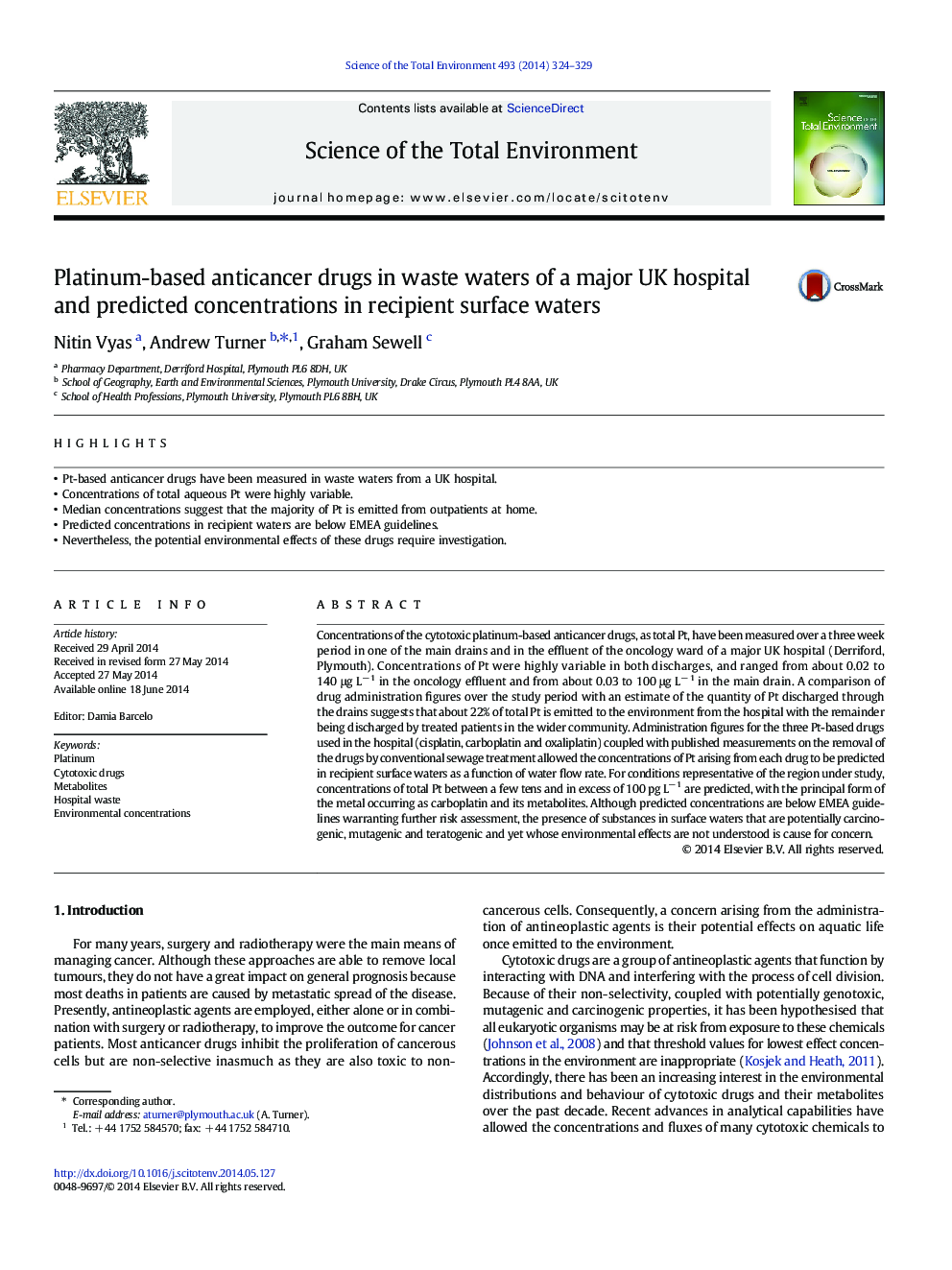| Article ID | Journal | Published Year | Pages | File Type |
|---|---|---|---|---|
| 6329655 | Science of The Total Environment | 2014 | 6 Pages |
â¢Pt-based anticancer drugs have been measured in waste waters from a UK hospital.â¢Concentrations of total aqueous Pt were highly variable.â¢Median concentrations suggest that the majority of Pt is emitted from outpatients at home.â¢Predicted concentrations in recipient waters are below EMEA guidelines.â¢Nevertheless, the potential environmental effects of these drugs require investigation.
Concentrations of the cytotoxic platinum-based anticancer drugs, as total Pt, have been measured over a three week period in one of the main drains and in the effluent of the oncology ward of a major UK hospital (Derriford, Plymouth). Concentrations of Pt were highly variable in both discharges, and ranged from about 0.02 to 140 μg Lâ 1 in the oncology effluent and from about 0.03 to 100 μg Lâ 1 in the main drain. A comparison of drug administration figures over the study period with an estimate of the quantity of Pt discharged through the drains suggests that about 22% of total Pt is emitted to the environment from the hospital with the remainder being discharged by treated patients in the wider community. Administration figures for the three Pt-based drugs used in the hospital (cisplatin, carboplatin and oxaliplatin) coupled with published measurements on the removal of the drugs by conventional sewage treatment allowed the concentrations of Pt arising from each drug to be predicted in recipient surface waters as a function of water flow rate. For conditions representative of the region under study, concentrations of total Pt between a few tens and in excess of 100 pg Lâ 1 are predicted, with the principal form of the metal occurring as carboplatin and its metabolites. Although predicted concentrations are below EMEA guidelines warranting further risk assessment, the presence of substances in surface waters that are potentially carcinogenic, mutagenic and teratogenic and yet whose environmental effects are not understood is cause for concern.
